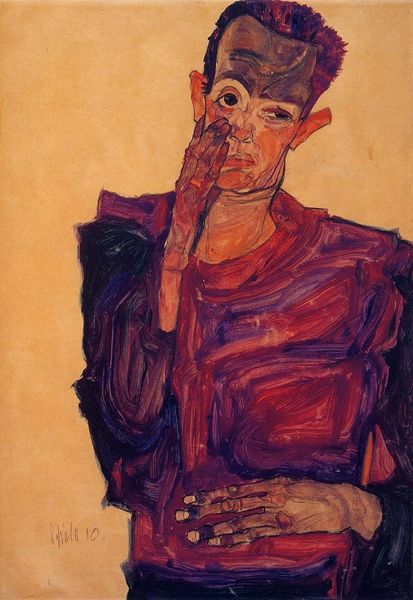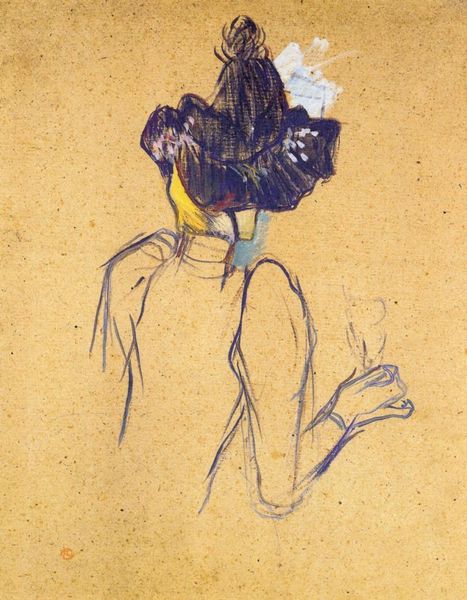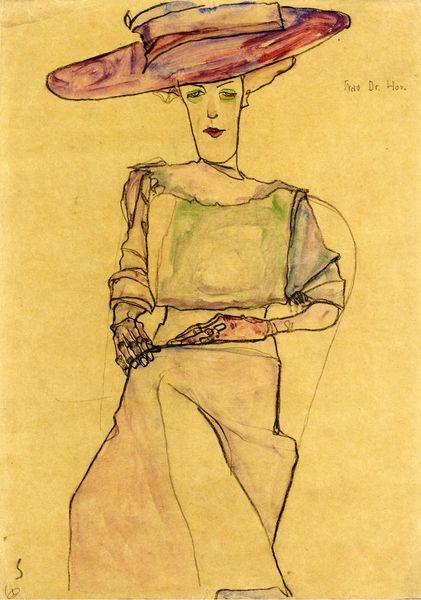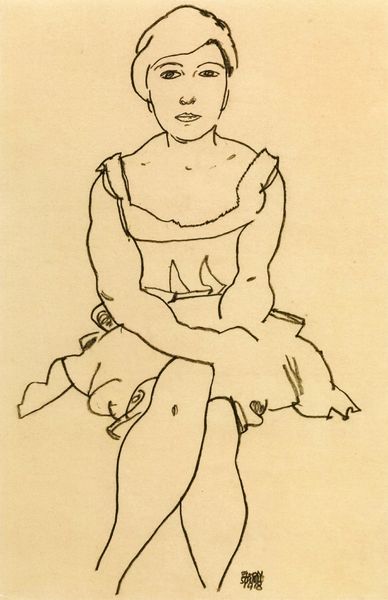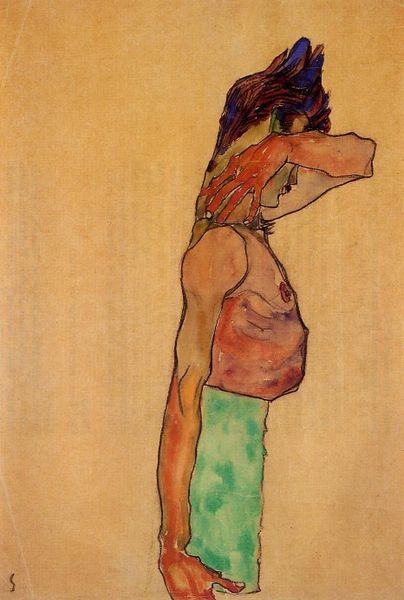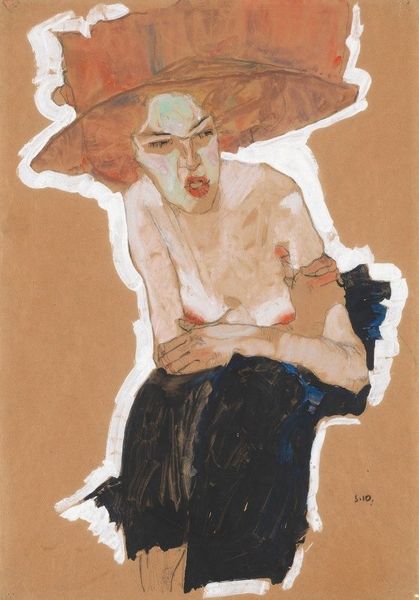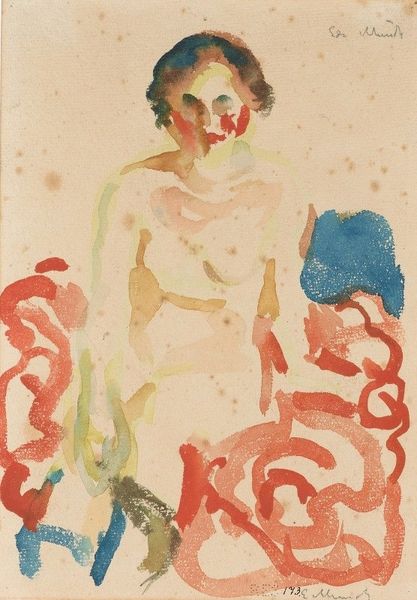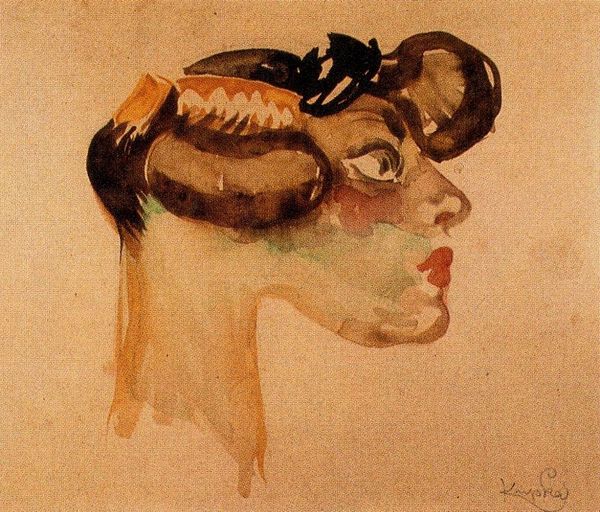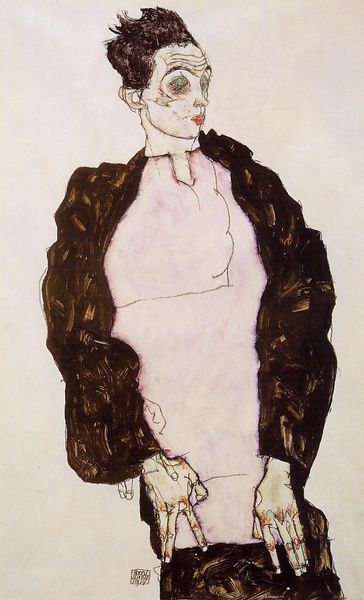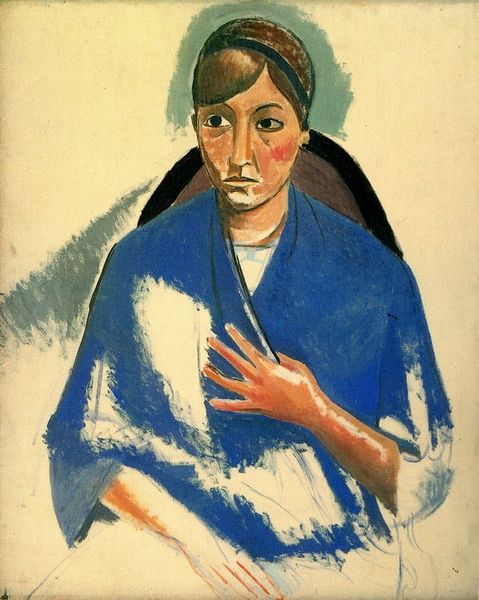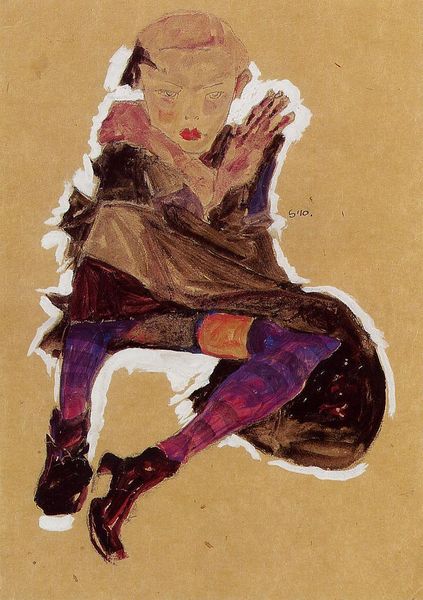
drawing, coloured-pencil, paper
portrait
drawing
coloured-pencil
self-portrait
caricature
german-expressionism
paper
expressionism
Copyright: Public domain
Curator: Immediately, there's a raw vulnerability here, wouldn't you agree? Editor: Indeed. This drawing by Egon Schiele, titled "Self Portrait with Hands on Chest", dates back to 1910 and makes powerful use of coloured pencils on paper. My first impression is fixated on the stark angularity; the nervous lines create tension and emphasize the materiality. Curator: Absolutely. It’s tempting to read the artist's psychological state through those lines, his expressionistic approach emphasizing his internal struggles. Looking at the time, the turn of the century, it resonates with larger social anxieties and feelings of alienation felt amongst intellectuals and artists during that period. Editor: Speaking of the artistic hand, let's address Schiele’s methods more specifically. He’s carefully chosen this relatively cheap medium for its availability and how it impacts his making process. It doesn't carry the heavy social weight that comes with oil paints or sculpture. Coloured pencils also create unique linear precision for contouring his face. Curator: Yes, the contours, though not perfectly realistic, are evocative. Notice the distortion, the elongated fingers, and the slightly unnerving gaze. It is typical of Expressionism and speaks volumes about self-perception, an exploration into the very idea of identity. The unusual colour choices for his skin, especially under his eye, further add to a reading of emotional turbulence. How are his gender and sexual identities coming to play, would you say? Editor: I’d agree about emotional impact! As for identity and those provocative colour choices, that could be tied to the cost and origin of the materials too. Where did Schiele source these coloured pencils? Did they come from a factory employing exploited workers, perpetuating gendered or colonial power structures through art supply? The history of pigment production itself tells a complex story. Curator: I grant you that perspective about production and market context and it’s relevant when thinking about cultural studies and the commodification of art. However, focusing on the historical narrative allows me to look closer at gender roles. His defiant self-portraits directly confront traditional expectations within art history, giving viewers agency in their perception of sexuality. It is not solely for the male gaze as previous artists upheld. Editor: Interesting, how do you mean? Curator: Because through his depiction he challenges patriarchal assumptions! But it also means for many, especially women artists then and now, a deeper space for questioning traditional artistic materials and forms to make commentaries about life and agency, wouldn't you agree? Editor: Precisely, now as we look more closely, it provides a much broader awareness of labor conditions in art production. Curator: Yes, and of societal gender positions, now visible too.
Comments
No comments
Be the first to comment and join the conversation on the ultimate creative platform.
